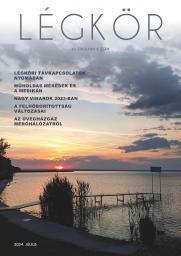LÉGKÖR - Quarterly Newsletter
Vol. 69, No. 3 * Pages 151–212 * July 2024
 |
|
 download [pdf: 38675 KB]
download [pdf: 38675 KB]
Using the snapshot approach for the investigation of climate change – Tracing atmospheric teleconnections by using ensemble climate simulations
Haszpra Tímea, Drótos Gábor, Herein Mátyás, Topál Dániel
DOI:10.56474/legkor.2024.3.1 (pp. 150–160)
Haszpra Tímea, Drótos Gábor, Herein Mátyás, Topál Dániel
DOI:10.56474/legkor.2024.3.1 (pp. 150–160)
Use of microwave satellite measurements in case of medicanes
Hérincs Dávid, Dezső Zsuzsanna
DOI:10.56474/legkor.2024.3.2 (pp. 161–171)
Hérincs Dávid, Dezső Zsuzsanna
DOI:10.56474/legkor.2024.3.2 (pp. 161–171)
Hungarian contribution to the pan-European greenhouse gas monitoring network
Haszpra László
DOI:10.56474/legkor.2024.3.4 (pp. 180–185)
Haszpra László
DOI:10.56474/legkor.2024.3.4 (pp. 180–185)
Analysis of changes in cloud cover based on the ERA5 reanalysis database
Soós Virág, Breuer Hajnalka
DOI:10.56474/legkor.2024.3.5 (pp. 186–191)
Soós Virág, Breuer Hajnalka
DOI:10.56474/legkor.2024.3.5 (pp. 186–191)
LÉGKÖR - Quarterly Newsletter
A folyóirat nyomtatott változata megrendelhető a legkor@met.hu címen.
Kapcsolat: legkor@met.hu
SZERKESZTŐBIZOTTSÁG
SZERZŐI ÚTMUTATÓ
Kapcsolat: legkor@met.hu
SZERKESZTŐBIZOTTSÁG
SZERZŐI ÚTMUTATÓ









